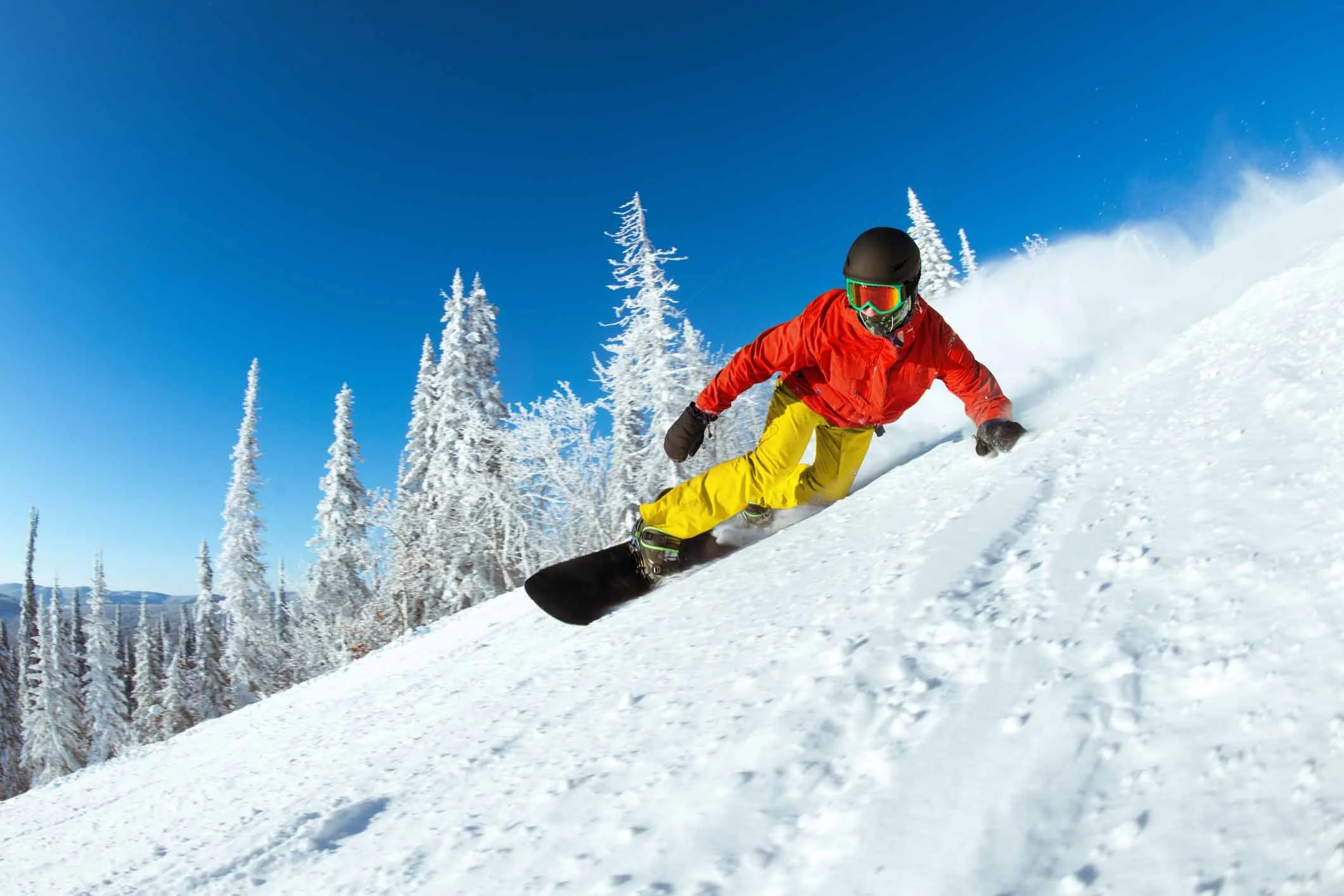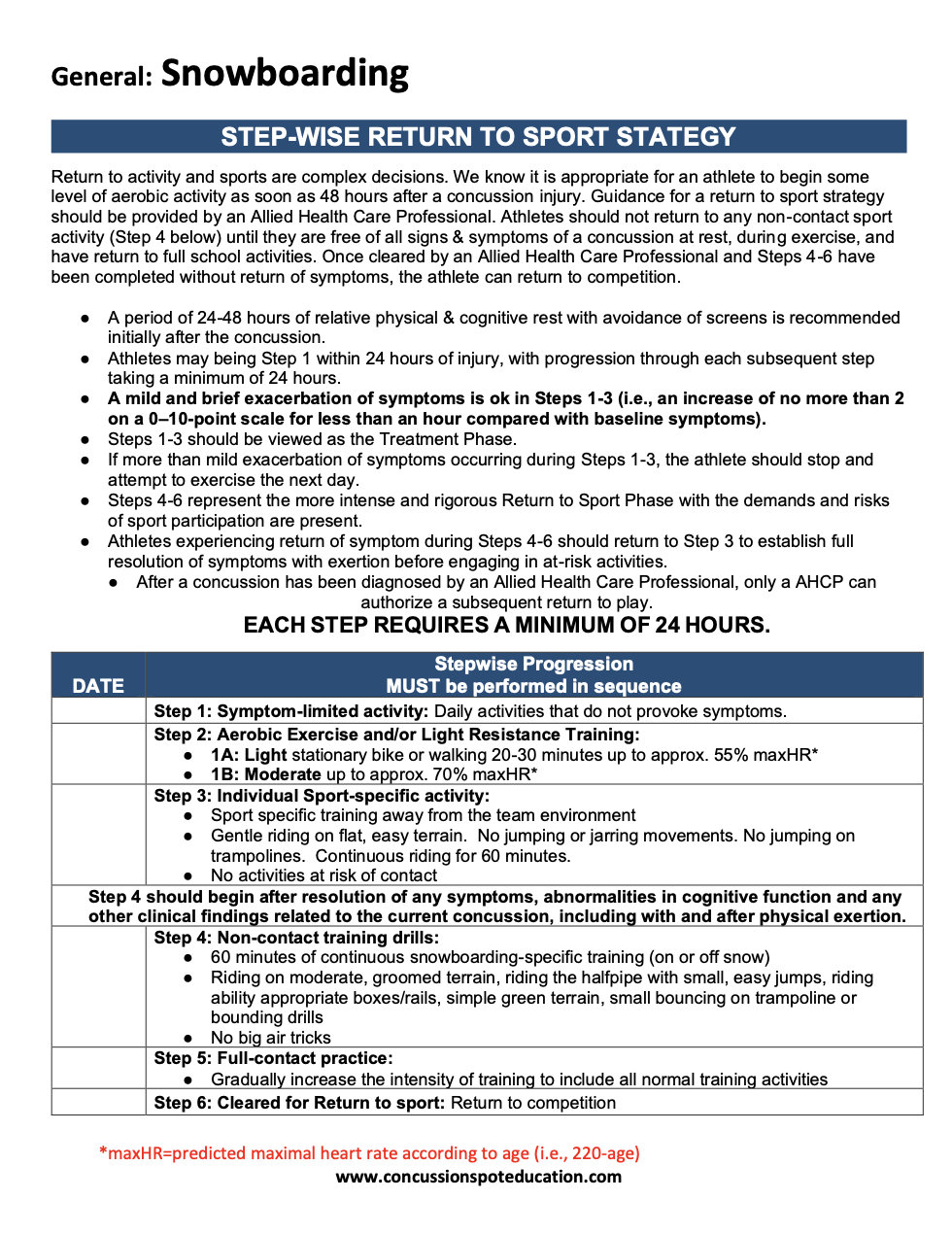

Snowboarding Concussion Return To Sport Protocol
The Snowboarding Concussion Return-to-Sport (RTS) Protocol is a sport-specific guideline designed to help snowboarders safely return to riding following a concussion. This protocol goes beyond general concussion recovery frameworks by addressing the unique physical, environmental, and cognitive demands of snowboarding—such as dynamic balance, high-speed terrain navigation, aerial awareness, and rapid decision-making on varied snow conditions.
Developed with input from evidence-based concussion research and real-world snow sport performance needs, the protocol follows a structured, six-phase progression. Each phase builds upon the last, gradually reintroducing cognitive load, physical exertion, and sport-specific skills while carefully monitoring symptoms. The protocol ensures snowboarders regain the coordination, confidence, and mental clarity required for safe performance on the mountain.
The progression begins with rest and light symptom-limited activity, then moves into aerobic conditioning without head impact. As the rider progresses, the protocol incorporates balance work, dryland drills that simulate carving and edge control, and eventually controlled on-snow sessions. Higher-level phases reintroduce terrain park features, speed, and aerial elements under supervision to assess full readiness.
Throughout the process, athletes must be symptom-free for at least 24 hours before advancing to the next stage. If symptoms return, the protocol advises returning to the previous stage and allowing for further rest and reassessment.
This RTS protocol is intended for use by healthcare providers, coaches, and snowboarders themselves to guide return-to-snow decisions with confidence and safety. By tailoring recovery to the sport’s specific risks and challenges, the protocol reduces the likelihood of premature return and re-injury—supporting long-term brain health and performance on the slopes.
The Snowboarding Concussion Return-to-Sport (RTS) Protocol is a sport-specific guideline designed to help snowboarders safely return to riding following a concussion. This protocol goes beyond general concussion recovery frameworks by addressing the unique physical, environmental, and cognitive demands of snowboarding—such as dynamic balance, high-speed terrain navigation, aerial awareness, and rapid decision-making on varied snow conditions.
Developed with input from evidence-based concussion research and real-world snow sport performance needs, the protocol follows a structured, six-phase progression. Each phase builds upon the last, gradually reintroducing cognitive load, physical exertion, and sport-specific skills while carefully monitoring symptoms. The protocol ensures snowboarders regain the coordination, confidence, and mental clarity required for safe performance on the mountain.
The progression begins with rest and light symptom-limited activity, then moves into aerobic conditioning without head impact. As the rider progresses, the protocol incorporates balance work, dryland drills that simulate carving and edge control, and eventually controlled on-snow sessions. Higher-level phases reintroduce terrain park features, speed, and aerial elements under supervision to assess full readiness.
Throughout the process, athletes must be symptom-free for at least 24 hours before advancing to the next stage. If symptoms return, the protocol advises returning to the previous stage and allowing for further rest and reassessment.
This RTS protocol is intended for use by healthcare providers, coaches, and snowboarders themselves to guide return-to-snow decisions with confidence and safety. By tailoring recovery to the sport’s specific risks and challenges, the protocol reduces the likelihood of premature return and re-injury—supporting long-term brain health and performance on the slopes.
